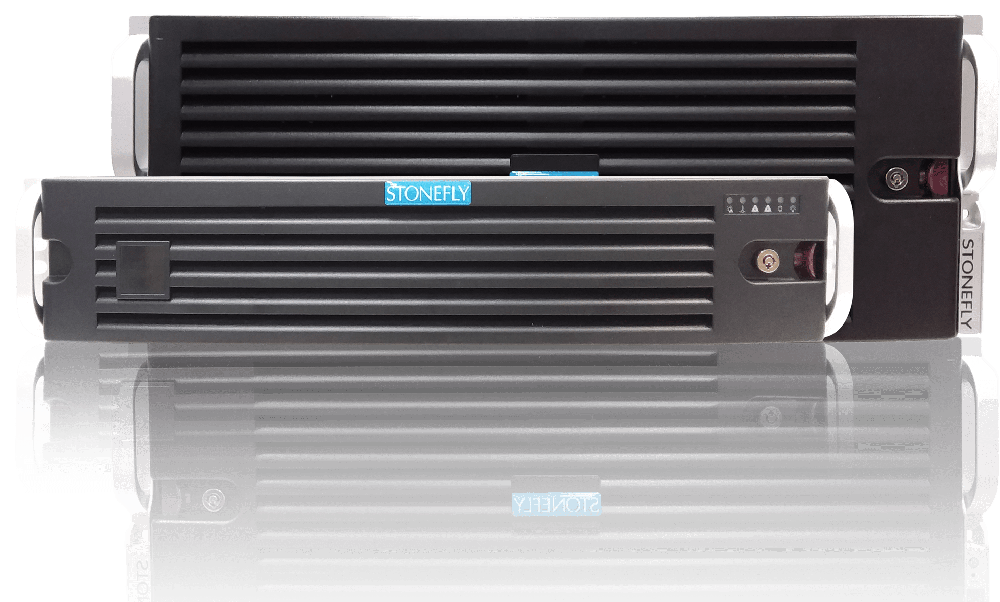Traditional backup systems grapple with a substantial challenge — the dormant potential of unused backup data, often measured in terabytes. This resource sits idle, taking up space without actively contributing to an organization’s IT resilience. The remedy to this problem lies in the innovative domain of sandbox environments. Going beyond conventional data recovery, sandboxes provide a controlled space for robust testing, validation, and innovation.
This blog dives into the crux of underutilized backup data, uncovers the practical impact of sandbox testing, and explains why adopting this approach is crucial for enterprise efficiency, security, and proactive data protection.
Untapped Potential: The Inefficiency of Traditional Backup Systems
When it comes to data management and effective utilization, traditional backup systems face a formidable challenge. Despite their in data protection, these systems exhibit limitations hindering their efficacy in the dynamic IT landscape. The issue lies in the static nature of these backups, storing terabytes of data that often remains idle. This inertia becomes a roadblock, preventing organizations from fully leveraging their backup data potential.
Let’s dissect these limitations and understand why relying solely on data preservation for recovery falls short of meeting the demands of the contemporary IT environment.
- Limited Testing Environment: Traditional backups lack a controlled testing environment, impeding organizations from thoroughly validating and optimizing their data recovery processes.
- Inactive Data Potential: Stored data in traditional backups often remains idle, missing the opportunity to actively contribute to ongoing operations and innovation.
- Static Data Preservation: The static nature of traditional backups hinders adaptability, preventing organizations from responding dynamically to evolving IT requirements.
- Data Resilience Gaps: Without a dedicated testing environment, organizations may experience gaps in data resilience, discovering weaknesses only during actual recovery scenarios.
- Inefficient Resource Utilization: Terabytes of data in idle backups result in inefficient resource utilization, hindering organizations from maximizing the value of their storage and processing capabilities.
Efficient Backup Data Utilization: The On-Demand Sandbox Advantage
In the expansive landscape of data management, the consequences of underutilized backup data and the absence of a controlled testing environment become catalysts for inefficiency and missed opportunities. Traditional backup systems, often laden with terabytes of critical information, pose a dual threat when left dormant—inefficient resource utilization and the inability to validate data in a real-world context. Understanding this void is pivotal, and herein lies the transformative significance of sandbox environments.
Before we look into how a sandbox environment overcomes the challenges of a traditional backup, it’s important to first clarify what is an on-demand sandbox.
What is an On-Demand Sandbox Environment?
An on-demand sandbox is a flexible and instantly deployable isolated environment designed for a variety of tasks such as testing, development, training, patching, updating, and executing software applications. Unlike traditional static sandboxes, the on-demand variant is not pre-configured and continuously available. Instead, it is generated dynamically, responding swiftly to immediate requirements and providing a transient yet powerful space for diverse operations.
Key Characteristics of an On-Demand Sandbox:
- Dynamic Provisioning: Instant creation of the sandbox environment as needed, offering agility and responsiveness to changing testing or development demands.
- Resource Efficiency: Optimal utilization of resources by initiating the sandbox only when required, reducing unnecessary overhead and costs associated with a persistent environment.
- Adaptability: Flexibility to spin up and dismantle the sandbox on-the-fly, allowing organizations to align testing activities precisely with their project timelines.
- Isolation: Secure and separate area for experimentation, ensuring that activities within the sandbox do not impact the production or live system.
- Scalability: Ability to scale resources up or down based on the complexity of testing scenarios, providing the necessary computing power for diverse tasks.
- Realistic Testing Scenarios: Like traditional sandboxes, the on-demand variant can be set up as a complete replica of the production environment or specific systems, facilitating realistic testing scenarios.
- Cost-Effective: Reduced costs associated with resource consumption, as resources are allocated only during the active lifespan of the on-demand sandbox.
What is an On-Demand Sandbox Used for? | Real-World Use-Cases of an On-Demand Sandbox Environment
These use-cases encapsulate the real-world applications of this dynamic testing space, showcasing its indispensability in diverse situations.
- Rapid Application Testing: On-demand sandboxes facilitate quick and controlled testing of new applications, updates, or patches, ensuring seamless integration and functionality before deployment.
- Development and Code Testing: Developers can use on-demand sandboxes to test code changes, debug applications, and evaluate the impact of new features or modifications in a secure and isolated environment.
- Security Patch Validation: Organizations can deploy on-demand sandboxes to validate the effectiveness of security patches and updates, identifying potential vulnerabilities before implementing changes in the live environment.
- Disaster Recovery Simulation: On-demand sandboxes enable realistic simulations of disaster scenarios, allowing organizations to assess the efficacy of their disaster recovery plans and ensuring data resilience.
- Training and Skill Development: These sandboxes provide a safe space for training sessions, allowing IT teams to enhance their skills, practice troubleshooting, and explore new technologies without affecting the production environment.
- User Acceptance Testing (UAT): Organizations can use on-demand sandboxes for UAT, allowing end-users to validate applications and systems in a controlled environment before widespread implementation.
- DevOps and Continuous Integration/Continuous Deployment (CI/CD): On-demand sandboxes play a crucial role in DevOps processes by providing isolated spaces for continuous integration and deployment testing, ensuring smooth and error-free software delivery.
- Data Migration Testing: Organizations can use on-demand sandboxes to test the migration of data between systems, platforms, or cloud environments, ensuring data integrity and minimizing potential risks.
- Software Updates and Rollbacks: Before implementing software updates, on-demand sandboxes allow organizations to test the updates in an isolated environment, ensuring compatibility and providing a rollback option if issues arise.
- Load Testing and Scalability Assessment: On-demand sandboxes enable organizations to conduct load testing to assess the performance and scalability of applications, ensuring they can handle varying levels of user activity.
How Sandbox Environments Overcome Traditional Backup System Challenges
Sandbox environments step in as catalysts for change, offering a controlled space where organizations can unlock the full potential of their backup data. The following list outlines key characteristics of sandbox environments, shedding light on how they overcome the challenges inherent in conventional backup systems, reshaping the way we approach data testing, patching, updating, and management.
- Dynamic Testing Environment: Sandboxes provide a controlled space for dynamic testing, allowing organizations to validate and optimize data recovery processes comprehensively. Unlike traditional setups, this environment mirrors real-world scenarios, enabling proactive identification of vulnerabilities.
- Utilizing Dormant Backups: By actively utilizing backup data in the sandbox, organizations unlock its potential, turning dormant archives into strategic assets. This not only maximizes resource efficiency but also ensures that stored information actively contributes to ongoing operations and innovation.
- Optimizing Data Security: Sandboxes address the gaps in data security by offering a space for thorough testing. This ensures that organizations not only recover data but do so in an optimized and efficient manner, reducing downtime and potential risks.
- Efficient Resource Utilization: Sandbox environments empower organizations to convert terabytes of dormant data into a dynamic resource. By orchestrating entire production environments for testing, patching, updating, and other DevOps tasks in a controlled space, resource utilization becomes efficient, maximizing the value of storage and processing capabilities.
Key Benefits of On-Demand Sandbox Environments
Discover the unparalleled advantages of on-demand sandbox environments, where agility and efficiency take center stage. Explore below to uncover the diverse and transformative benefits these sandboxes bring to the forefront of testing, development, and innovation.
- Immediate Availability: On-demand sandboxes offer instant provisioning, allowing organizations to create testing environments promptly as needed, reducing delays in development and testing cycles.
- Resource Efficiency: With the ability to create and dismantle the sandbox dynamically, resources are utilized efficiently, minimizing unnecessary costs associated with maintaining a persistent environment.
- Adaptability to Project Timelines: The on-demand nature of these sandboxes allows organizations to align testing activities precisely with project timelines, enhancing project management flexibility.
- Cost-Effective Testing: Reduced costs are associated with resource consumption, as resources are allocated only during the active lifespan of the on-demand sandbox, optimizing budget utilization.
- Scalability: On-demand sandboxes can scale resources up or down based on the complexity of testing scenarios, providing the necessary computing power for diverse tasks.
- Realistic Testing Scenarios: Similar to traditional sandboxes, the on-demand variant can be set up as a complete replica of the production environment or specific systems, facilitating realistic testing scenarios.
- Enhanced Security: On-demand sandboxes contribute to overall system security by allowing potential vulnerabilities to be identified and addressed before deployment in the live environment, ensuring robust data protection.
How StoneFly Delivers On-Demand Sandbox Environments
Discover the versatile deployment options for StoneFly’s on-demand sandbox environment, tailored to meet diverse organizational needs.
- Integrated Turnkey Appliances: Effortlessly deploy the StoneFly Sandbox within our turnkey backup and disaster recovery appliances—DR365V, DR365, DR365VIVA, and DR365U. Seamlessly integrated into these appliances, the sandbox is ready for setup, utilizing available storage and processing resources to provide a unified solution for testing and development.
- Purpose-Built Sandbox Appliance: Opt for a purpose-built sandbox appliance that seamlessly integrates with enterprise servers and virtual environments, including VMware, Hyper-V, KVM, and Citrix (XenServer). For organizations with an existing backup and DR system, our AI-integrated sandbox solution empowers sys admins to establish a tailored sandbox environment and train AI models for insightful analysis.
- No Additional Hardware Required: Choose flexibility with two options for a sandbox environment without the need for additional hardware:
- Bare-Metal or Virtual Installation: Install our patented 8th gen storage OS on your existing bare-metal or virtual environment. Repurpose idle resources to swiftly set up a sandbox environment, maximizing efficiency.
- Cloud Deployment: Set up a sandbox environment in the cloud using our patented 8th gen storage OS as a gateway. This option allows seamless utilization of cloud resources for your sandbox needs, eliminating the need for additional physical hardware.
Conclusion
The On-Demand Sandbox represents a pivotal shift in how organizations approach testing and development. This dynamic environment opens doors to efficient resource utilization, rapid testing cycles, and strategic decision-making. Whether seamlessly integrated into existing systems or set up in the cloud, the On-Demand Sandbox transcends traditional boundaries, allowing organizations to navigate the complexities of the modern data landscape with agility.
Embrace a future where data becomes an asset, where testing is dynamic, and where innovation knows no bounds. The journey to optimal data management starts with the transformative capabilities of an On-Demand Sandbox.










